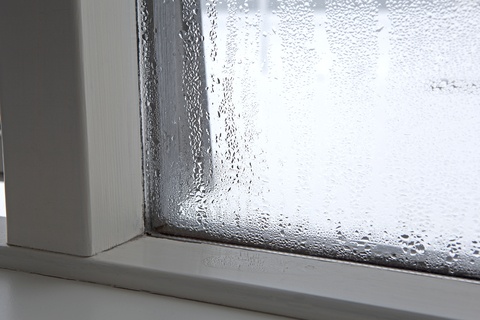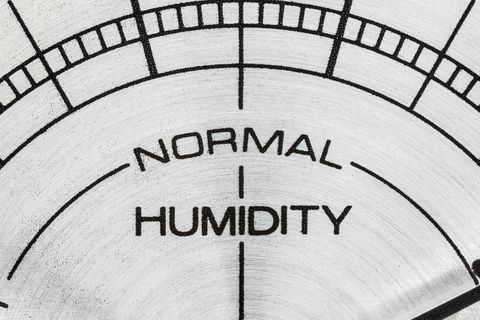At the Jersey Shore, and pretty much everywhere, most people only worry about humidity when it comes to summertime. But, when it comes to your home comfort, humidity is just as important to consider when it's cold outside. It just has a different effect on your home.
During the winter, humidity - or lack of humidity - is an important factor. Adjusting your system for humidity in the cold weather can be a significant step in the direction of improved comfort and even safety. These are some of the key points when it comes to the humidity in your Jersey Shore home when it comes to the winter...
What is Humidity?
 We all know that humidity makes us feel sticky and uncomfortable in the summer, but what is humidity exactly? Understanding what humidity is will help illustrate why it's so important in regards to home comfort. Essentially, humidity is water vapor, or water in gas form, that goes throughout the air.
We all know that humidity makes us feel sticky and uncomfortable in the summer, but what is humidity exactly? Understanding what humidity is will help illustrate why it's so important in regards to home comfort. Essentially, humidity is water vapor, or water in gas form, that goes throughout the air.
When it comes to describing the type of humidity it is and measuring it, there is “absolute humidity” and “relative humidity.” Absolute humidity is the actual amount of water vapor in the air. It’s measured as grams of vapor per cubic meter of air.
Relative humidity accounts for air temperature and is expressed in a percentage. This is what you typically hear about on the news and in weather reports. The percentage is what amount of the air’s capacity to hold water is actually holding water.
The reason this is important, in the winter as well as the summer, is because colder air can’t hold as much moisture as warm air. Relative humidity adjusts its percentage for that.
40 percent relative humidity in 70-degree air, for example, has more moisture in it than 40 percent humidity in 30-degree weather. That’s because the warmer air can hold more moisture.
When it comes to home comfort, relative humidity is what is having an impact on you. You'll want to adjust for temperature when determining how much moisture is in the air. The lower the temperature, the less percentage of humidity you’ll want in the air.
When it’s over 50 degrees Fahrenheit outside, you can have up to 50 percent humidity inside. If it’s between 20 and 49, be sure not to go over 40 percent. If it’s between 10 and 20 degrees outside, you'll want to keep it under 35 percent and under 30 percent if it dips down to zero.
If the humidity in your home goes outside these guidelines, you could run into some basic comfort issues.
If The Humidity In My Home Is Too High, What Will Happen?
If your humidity is too high, it means that there’s more moisture in the air than is necessary. This not only affects home comfort, but it can even cause some health issues too. This depends on the amount of humidity in the air.
For starters, moisture isn't a great conductor of heat. This can lead you to run your system a little harder than usual to make your home warm. In the end, all that moisture can end up costing you extra money in energy bills.
Another more commonly know issue, slightly high humidity can cause mugginess. This can make people in the house feel hot, clammy, sticky, and just generally uncomfortable. As the humidity climbs higher, you may notice condensation on your walls or in your window panes. This is a good indicator to look for when it comes to humidity in your home.
High humidity can also become a bigger problem than just home comfort, especially in colder weather. In the winter, you’re more likely to keep windows and doors closed all the time. This is nothing new to anyone. When you keep the house tight , it seals in moisture — and sometimes other unwanted elements — in your home with no way for them to make their way outside.
Making sure your humidity situation is taken care of before the wintertime when you have the house sealed up is important. Excessive moisture, plus the heat you are producing, can make your home a breeding ground for bacteria, mold, fungi, and even viruses.
If humidity in the house is high, people who suffer from allergies or asthma will begin experiencing symptoms. If you don't have your humidity situated, and an air filter change regularly, these symptoms could get much worse. Meanwhile, mold, mildew and fungi can do significant damage to your home if they aren't taken care of right away.
So What If The Humidity In Your Home Is Too Low?
 Low humidity is more of a common occurrence in the winter. The main issue with low humidity are factors that can work at the same time to create dry air in your home.
Low humidity is more of a common occurrence in the winter. The main issue with low humidity are factors that can work at the same time to create dry air in your home.
First, the air outside is cold, therefore it’s holding less moisture than warm air. That cold, dry air is seeping into your home through cracks in your home, window drafts that aren't fully sealed, and any space it can find. This will result in your heater popping on, and likely doing extra work. It warms the air inside your home, but doesn’t add any moisture. This means the air’s capacity to hold moisture rises as the temperature goes up. But, with no extra moisture, the relative humidity goes down.
This creates a low-humidity situation, due to the cold, dry original air. Then, the temperature rises, creating more capacity to hold moisture but not adding any.
Fortunately, low humidity in the home doesn’t cause as many problems as high humidity. However, there are still some undesirable effects.
Static electricity is one. Everyone knows that feeling walking around in cozy pajamas and socks, and you shock everything you touch! When you move around, you can build up little charges of electricity. In more humid air though, the water vapor acts as a conductor and moves the charges away from you.
If it’s less humid than it should be, the charges build up, rather than disperse. When they finally discharge because you touched a conductor, like something metal, you’ll feel a shock.
Another, and more severe problem with low humidity is increasing nosebleeds. When extremely dry air enters your system, the membranes inside your nose can dry out and begin to crack. This is a common factor that can lead to a nosebleed, especially if it’s already irritated due to a cold, allergies or any other complications.

